Was there a massacre after Kenya's anti-tax protests?
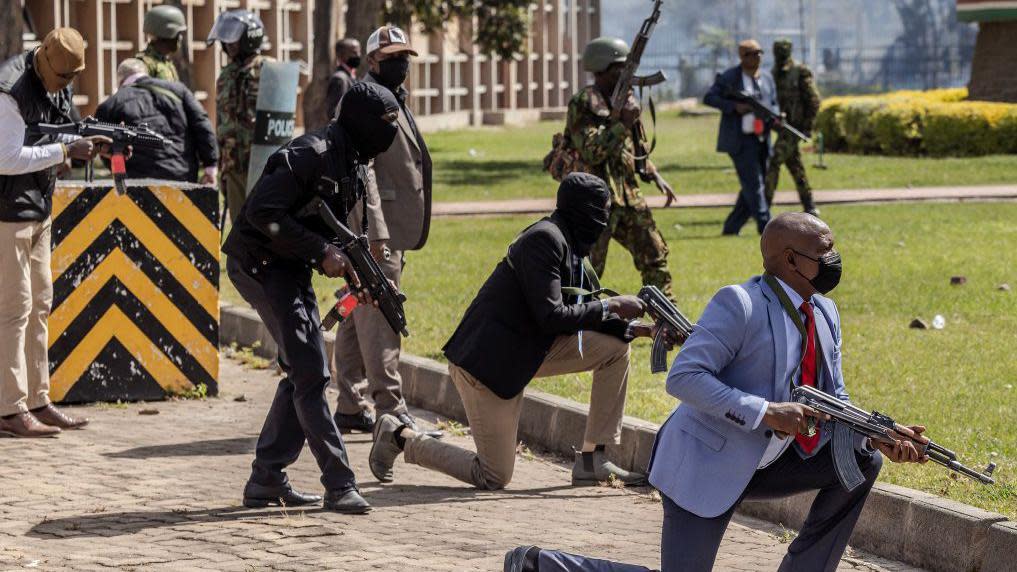
In the chaotic context of this week's violence on the streets of the Kenyan capital and a government accused of responding brutally to protests, rumours began to take on a life of their own - feeding into public anger and further stoking a situation that was already tense.
On Tuesday citizens watched in horror as a bloody day unfolded in Nairobi.
The country’s police watchdog is now investigating allegations that officers shot dead protesters outside the national parliament during a day of demonstrations in which at least 23 people are reported to have died.
Within hours many Kenyans began to hear reports of another, even more brutal incident - an alleged massacre of civilians in Githurai, a residential suburb 14km (nine miles) north-east of central Nairobi.
The story quickly took hold on social media, where some people claimed more than 200 had been killed.
Reports referencing the rumours emerged in the media, followed on Wednesday by statements by reputable organisations calling for an independent inquiry. When protesters returned to the heart of Nairobi on Thursday, many spoke of the alleged massacre in Githurai as a reason.
But a BBC investigation has found no evidence of mass killings in Githurai - raising questions about how readily misinformation can spread amid a crisis.
Here we unpick how the story unfolded.
The first sense of anything significant taking place in the suburb emerged on Tuesday evening.
It had been a chaotic day across Kenya, with tens of thousands attending protests in central Nairobi which quickly escalated, leading to the storming of parliament, the shooting dead of protesters, looting and attacks on police.
After the shocking violence outside and inside parliament the demonstrators began to disperse, many headed towards their homes on the city’s outskirts.
Githurai is a densely populated residential area on the Thika Highway, the main road north from the city centre.
It has rows of formal housing as well as areas of informal settlements, home to tens of thousands of commuters who make the daily trip into central Nairobi.
As dusk fell many Githurai residents suddenly became aware of a significant presence of police and what many believed were the military.
Communications were patchy on Tuesday evening, with internet outages across Kenya and mobile phone signals periodically going down.
But as news of events in Githurai emerged, some videos did make their way to social media.
BBC Verify has managed to authenticate several videos posted by six different online users and from different locations around the area.
They show evidence of heavy and continuous gunfire in Githurai, around the main roundabout on the Thika Highway.
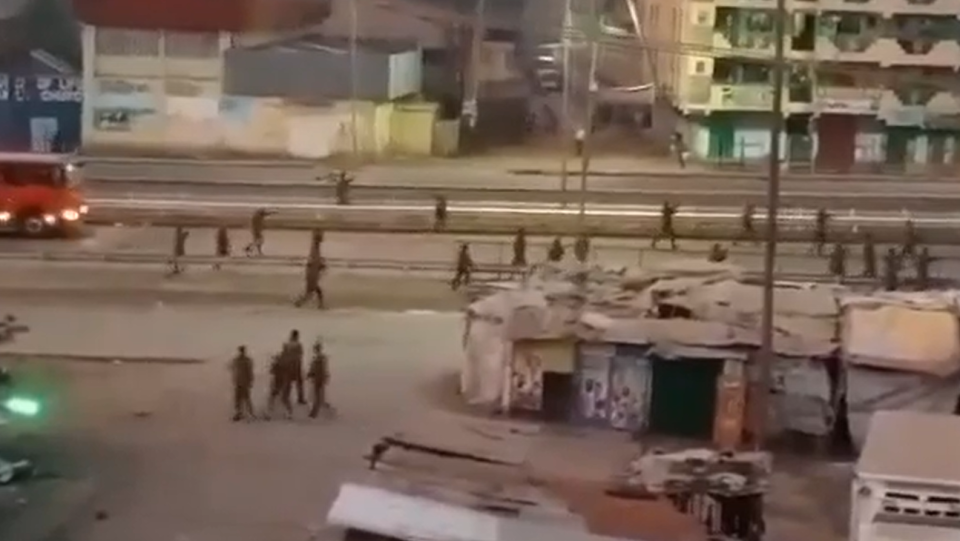
In one video, we see security forces advancing towards the protesters and some can be seen shooting - it is unclear from the video whether at the protesters or in the air, and it is impossible to know whether the guns were firing live rounds, rubber bullets or blanks.
We are yet to come across any verifiable video or image of people killed around that time.
A graphic image circulating online shows a body with at least eight bullet holes, but the nature of how it was taken makes it challenging to verify because it is taken at very close range and there are no clearly identifiable location points.
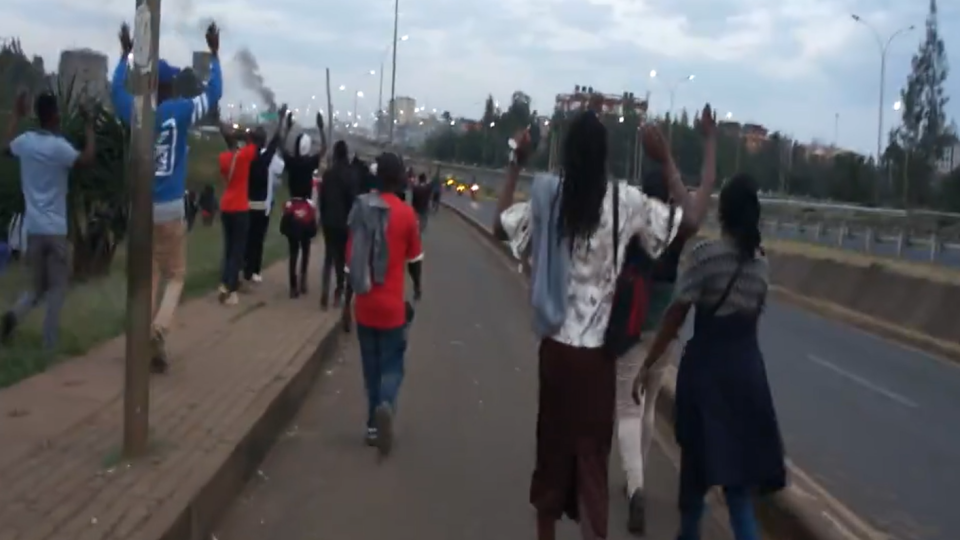
In one video clip, which we were able to authenticate by verifying identifiable locations, people can be seen walking towards Githurai.
Smoke can be seen rising from the area from a distance as the person filming walks towards the suburb. Those walking alongside the person filming are raising their hands up to show they do not pose any danger.
Another video filmed nearby the roundabout shows dozens of people gathered around the area and running away from the scene as gunfire can be heard.
In some of the videos, you can see what looks like vehicles belonging to the military or police on the road, and in two of the clips those filming talk about the road having been blocked by protesters.
Although the details are hard to verify, it is clear that a major security operation took place in the suburb.
But an analysis of social media shows misinformation about what had happened was already starting to take hold.
BBC Verify found that old videos filmed in 2022 were being reshared on social media, purporting to show protesters walking along a street carrying flaming torches at this week's protests.
The BBC Global Disinformation Unit had previously investigated the clip and discovered that it was recorded in Ghana two years ago. This is not the first time it has been misrepresented.
Despite the incomplete understanding of what happened in Githurai, as Kenyans woke up on Wednesday morning reports began to spread of an alleged massacre.
It was discussed by radio DJs, reported as rumour by some Kenyan newspapers and widely discussed online. The word "Githurai" was trending on social media sites, including X.
The state-funded Kenya National Commission on Human Rights said it had "received unverified reports of scores of residents who were killed by the stray bullets", which it said it would investigate.
And later that day the allegations were given new credibility when they were referred to directly by a leading legal organisation, the Law Society of Kenya (LSK) - a body which represents the country’s lawyers and works to promote the rule of law.
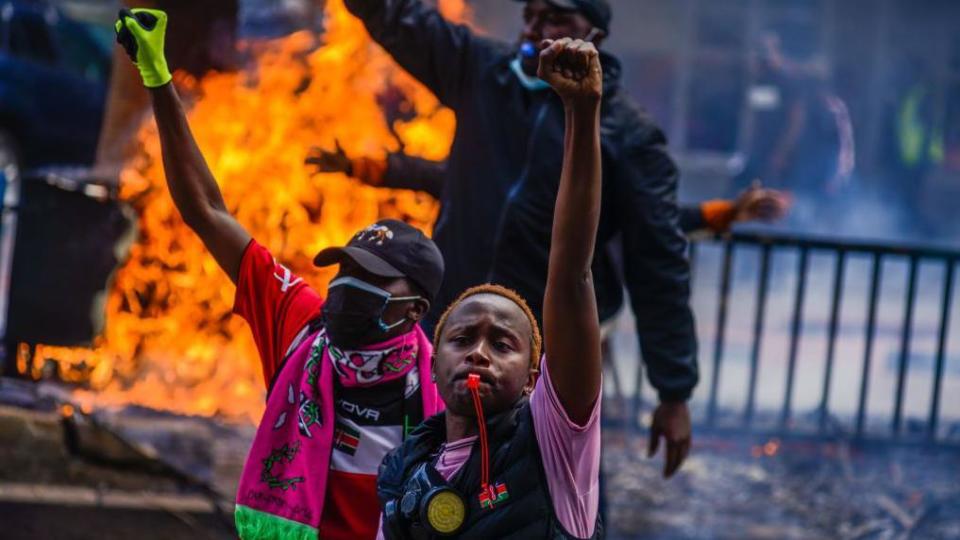
Responding to widespread public anger at alleged police brutality outside parliament, LSK president Faith Odhiambo also called for an international investigation into what she called the “massacre” in Githurai.
In a press conference, carried by some Kenyan broadcasters, she said: “We call upon the international community to conduct independent investigations on the massacre meted on the residents of Githurai, Nairobi, on the night of 25 June 2024.
“I dare ask, is Githurai a protected area? Is Githurai an area that members of the public should not stay, should not live? Why was there a massacre where people are living peacefully? We demand answers to those questions.”
She added: “From social media, people have been saying that over 100 people were killed yesterday. So we cannot allow those lives to go uncounted, that the people who caused those deaths to be held accountable.”
Ms Odhiambo has subsequently told the BBC that she now accepts she did not have evidence of a mass killing at the time that she gave her press conference and said she was willing to withdraw the allegation a massacre had occurred.
In an interview on Thursday, she said the LSK intended to establish a help desk in Githurai to “slowly collect” evidence of what had happened - and said in previous incidents of mass shootings in Kenya, bodies had been buried and only found later.
She said: “We need to ascertain the number. We want to set up a team to investigate the concerns that were made, the rumours that bodies were collected.”
Asked specifically whether she stood by her decision to make the allegation of a massacre, she said: “Maybe in hindsight I accept that I shouldn’t have called it a massacre.”
Other public bodies also spoke publicly about a “massacre” at Githurai.
The word was used on Wednesday afternoon in a statement issued by the Police Reform Working Group, an alliance of organisations that campaign for better policing.
The statement said: “Reports show that police shot several people in Githurai in Nairobi - one over 40 times - between 10pm and 1am, way after the protest ended.
“We believe that the massacre that happened in Githurai was fueled by an inciteful, and insensitive address President William Ruto gave yesterday at State House. Ruto spoke at 9 pm and threatened Kenyans, and the massacre started at 10pm.”
A spokesperson for the Police Reform Working Group on Friday told the BBC the organisation’s position was now that the alleged massacre at Githurai was “unverified”, but declined to comment any further on its statement from Wednesday.
By Wednesday afternoon the sense of public anger about the incident in Githurai was so significant that the BBC sent a reporting team to investigate on the ground.
But by the time the crew arrived, the bustling suburb was largely calm as traders carried on with their businesses.
Many of those we spoke to confirmed Tuesday’s violent confrontations between civilians and security forces.
A police vehicle was burned. “We dismantled the shell and sold what remained of it as scrap metal,” one resident told us.
But no-one we spoke to reported seeing any dead bodies, nor could they identify anyone who had been killed.
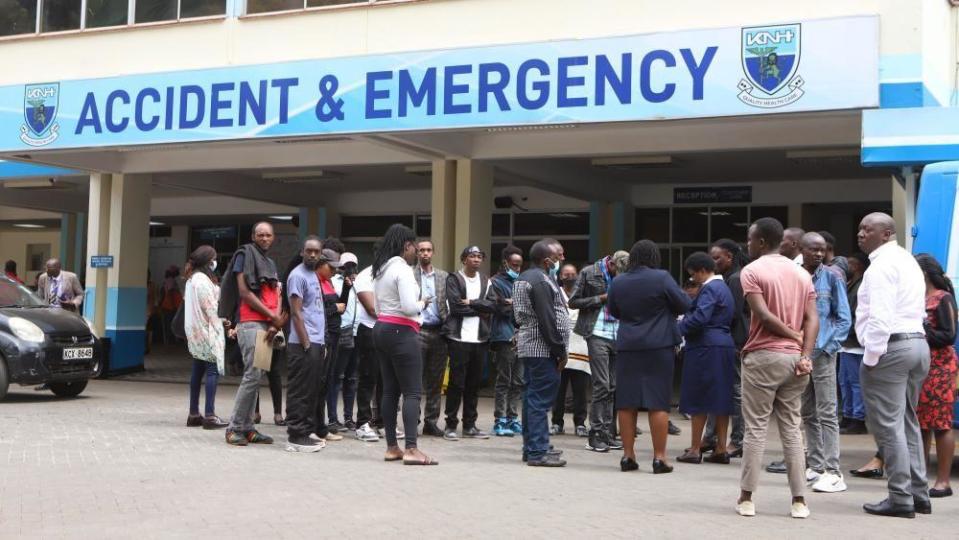
However, the BBC did track down a teenager who was shot during the incident in the suburb.
Winfrey Wairimu, 16, was hit by a stray bullet as she visited her mother at her confectionery stall by a bus stop when a crowd of people ran by, pursued by security forces.
Ms Wairimu’s mother Tabitha Mwaniki, 37, spoke to the BBC about what happened.
“Security officers were chasing them, lobbing teargas canisters and firing gunshots,” she said.
“She called out ‘Mum!’ and I thought she was just in shock because of the chaos she’d witnessed.
“I called her name, ‘Wairimu, Wairimu’, but she didn’t answer.”
The BBC has since visited the injured teenager and her mother at Nairobi’s Kenyatta National Hospital, where she underwent surgery on Wednesday for a bullet wound on her waist.
By Wednesday evening details began emerging of different allegations from Githurai - of protesters attacking police.
In its main evening bulletin on Wednesday, Kenya’s Citizen TV reported that 20 officers had been injured after a police vehicle was attacked - and repeated the allegation heard earlier by the BBC that another police vehicle had been burned.
Despite the confusing picture about what had happened, Githurai remained part of the conversation in Nairobi as the week progressed.
On Thursday, BBC reporters met several people joining renewed protests in the capital who said news of the alleged massacre had in part inspired them to demonstrate.
One woman told us: “People were massacred yesterday at home. I don’t understand why people are not actually talking about what happened in Githurai.
“The internet was down, electricity was down. So many deaths were recorded, we were hearing gunshots from wherever. But there’s nobody actually talking about what happened in Githurai.
“Nobody is explaining why that number of people was killed there.”
“I barely got any sleep yesterday just thinking about how many people died in Githurai,” she added.
Asked to respond to the fact that no evidence had emerged of a mass killing in the suburb, she said: “There are videos of people being shot down, but at that time things were down - the internet was down, electricity was down.”
Kenya’s Standard newspaper has reported that there were three deaths in Githurai, something the BBC has been unable to confirm and an allegation on which the police have declined to comment.
The BBC has asked Kenya’s police about what happened in Githurai but the force declined to comment.
A human rights advocate who lives and works in Githurai, Njoki Gachanja, told investigations platform Africa Uncensored that the reports of a massacre were untrue.
“All these bodies that people have been talking about – that did not happen in Githurai,” she said in a video posted on Africa Uncensored’s account on Wednesday.
She said the organisation she works for, Githurai Social Justice Centre, had been “on the ground since morning”, held community meetings and forums trying to look for these victims or their families, but had found no evidence of killings at the reported scale.
“I’d like to confirm that I live in Githurai and there’s no massacre in Githurai.”
Ms Gachanja did say they had traced one body with bullet wounds to City Mortuary, the main government morgue.
She confirmed hearing the confrontation between security forces and youths in the area on Tuesday from around 18:00 to 20:00 local time with more gunfire heard overnight.
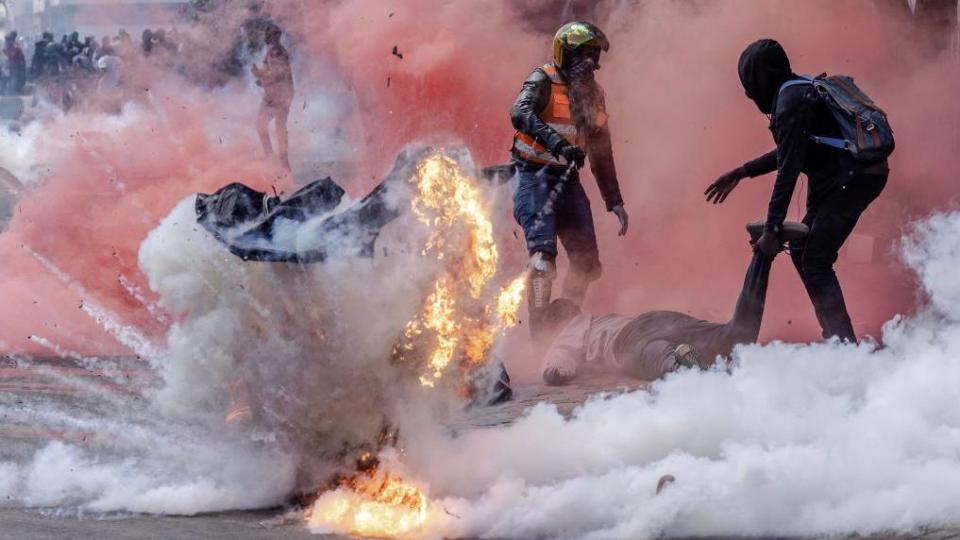
Many in Kenya believe the government, police and security forces have serious questions to answer about their response to the protests.
Kenya’s international allies and even the UN secretary-general expressed concern about Tuesday’s security response and warned the country to protect the right to peaceful demonstration.
Yet it is clear that amid the chaos, not every claim made about the authorities was true.
It may be that in time new details do emerge to support claims of police brutality in Githurai.
But by Friday evening the respected Kenya National Commission on Human Rights, whose figures have been used by many global media organisations, said its confirmed death toll linked to the protests this week remained at 23, including 19 in Nairobi during the actual protests on Tuesday.
And after the alleged massacre in Githurai there is still no evidence of mass killings, with at least some of those who made the allegations now prepared to accept there is doubt over what happened.
The story of how news spread of what happened, or rather what may not have happened, in the suburb is a reminder of the power of online communication.
Social media has become a significant tool in inspiring and co-ordinating grassroots protests and it has been used in recent weeks in Kenya to make a powerful impact.
But as the BBC’s work to assess the evidence in the case of Githurai appears to demonstrate, it has the ability too to mislead and add fuel to an already raging fire.
More BBC stories on the Kenya protests:
Protesters set fire to Kenya's parliament - but also saved two MPs
New faces of protest - Kenya's Gen Z anti-tax revolutionaries

Go to BBCAfrica.com for more news from the African continent.
Follow us on Twitter @BBCAfrica, on Facebook at BBC Africa or on Instagram at bbcafrica

